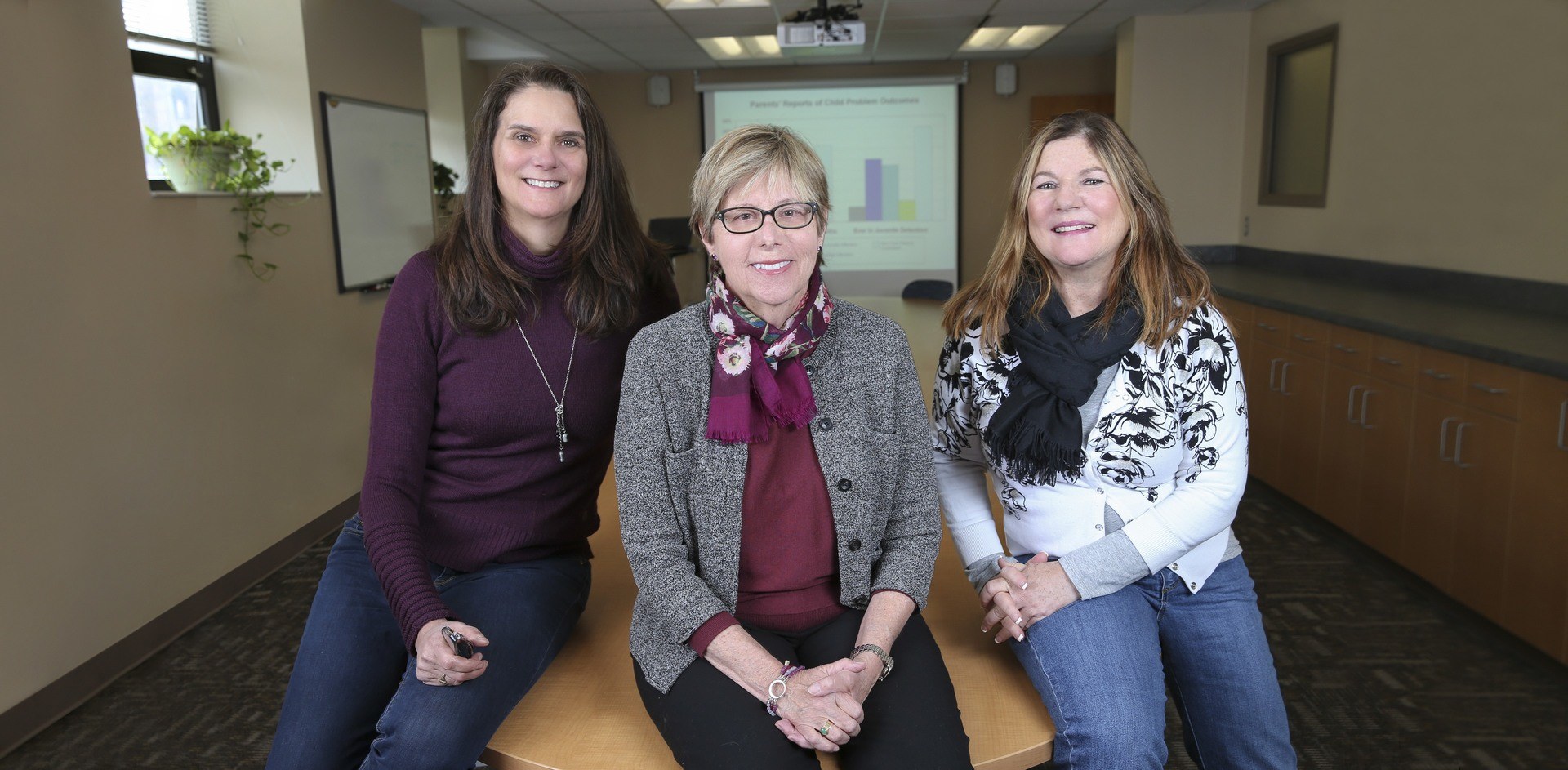

BGSU research takes aim at social tool for fighting COVID-19
Courses offered this summer:
- Fighting COVID-19 with Public Health undergraduate course
- Fighting COVID-19 with Public Health graduate course
- Food Insecurity and COVID-19 graduate course
- Epidemiology undergraduate course
- Epidemiology graduate course
- Emerging Infectious Diseases undergraduate course
- Emerging Infectious Diseases graduate course
Sociologists gain NSF COVID-19 grant to study impact of social distancing
By Julie Carle
Three Bowling Green State University researchers are taking aim at a social tool in the arsenal to fight the COVID-19 pandemic.
Drs. Peggy Giordano, Monica Longmore and Wendy Manning will conduct research on social distancing and what factors might influence individual’s levels of compliance as they grapple with recommendations to stay at least six feet away from others and to avoid gathering in groups. The sociology faculty members recently received a nod from the National Science Foundation (NSF) for a one-year, $200,000 Rapid Response Research grant to research how people are complying with the pandemic guidelines.
“We know nothing about what it means to be social distancing. Our society's so oriented toward social interactions in person,” Manning said. “As officials are asking people to limit and restrict their social worlds, this is a new opportunity to understand what this kind of stress means for people and how they’re functioning.”
“Maybe being heavily embedded in a good, strong social network is not necessarily a positive for following the social distancing recommendations,” the team hypothesized. If people are used to hanging out with friends multiple times a week or visiting family frequently, social distancing could be more difficult.
As sociologists, they are well aware that human behavior is shaped by the groups to which people belong and by the social interaction that takes place within those groups. One of the distinct aspects of the BGSU research is that it relies, not on strangers to answer a survey, but on a group of approximately 1,300 Lucas County residents who have been part of a longitudinal study for about 20 years.
The Toledo Adolescent Relationship Study started in 2001, Longmore said.
“Peggy’s a criminologist, Wendy does demography and I’m a social psychologist, and we wanted to work together to bridge these different theoretical perspectives and our interest in social relationships,” she said.
Participants selected for the study vary widely in their education, neighborhood circumstances, economic levels and diversity. The study examined the influence of parents, peers and romantic partners on adolescent and eventually young adult behaviors. And over the course of the previous six interviews, the research has retained a focus on romantic partners as well on involvement with peers and parents as influences on significant behavioral outcomes, Longmore said.
Over the past 20 years, these individuals have become adults, many married, with children and some are caring for parents. By virtue of collecting information six times during the two decades, the research team already knows quite a bit about this group.
All of the interviews have resulted is this longitudinal study that “positions us to assess things like whether the experience of social distancing has influenced stress levels, negative coping strategies such as increased drinking, or shifts in levels of depression,” Giordano said.
“We know a lot about this population and so now we can use that to frame and understand this rather different period in all of our lives” Giordano said.
“Because the entire project is about social relationships, this newest round of online questionnaires and in-depth interviews with a smaller subset will explore what social distancing means for individuals’ wellbeing in relationships and in family functioning,” Manning said.
The timing was serendipitous. The field work for the sixth wave of data collection was wrapping up in March at about the same time as news of the shutdowns and closings was evolving, Manning said.
“We started asking, ‘What’s happening with our sample?’” she said.
It was a great opportunity to explore the impact of social distancing. Giordano, Longmore and Manning pivoted and worked intensely for two weeks to develop and write the proposal for the NSF’s RAPID grants for COVID-19. They received a response in two days, affirming their research topic has value.
“We assume there are going to be a lot of negative influences, but there’s also going to be some people who do quite well and cope well, “Giordano said. The study will try to identify the positive coping strategies that work well, as well as characteristics of people who are able to maintain social distancing guidelines and those who aren’t able to consistently follow the guidelines.
Maybe decisions not to comply are based on other life circumstances that get in the way, they suggested. “I could have the best intentions in the world of being a perfect social distancer, but the odds I can achieve that might be low because of caring for children, parents or disabled members of the family, Manning said.
The long-term impact of the study has many implications for enhancing public good.
“This might help public health organizations move away from the idea of ‘one size fits all’ messaging,” Giordano said.
Because public health is very much about communication and messaging strategies, the results could help shape how these topics are communicated to target audiences, such as for people who are highly disadvantaged and might have to choose between complying with public requests or caring for family members.
The multi-method study begins in May with the in-depth interviews followed by the online surveys in June. They hope to wrap up the field work and begin analyzing the qualitative data with the help of undergraduate and graduate students by December.
The team will prepare a report as well as engage in community outreach to share their findings. Though the NSF grant concludes next April, the team believes there will be additional research opportunities about social distancing that will follow.
Updated: 05/14/2020 04:11PM
